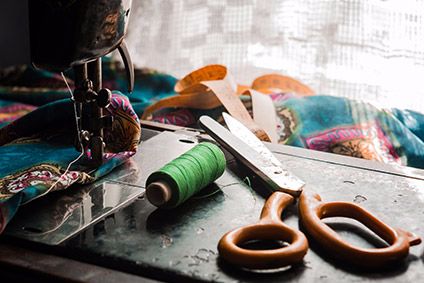
Homeworkers are rarely identified in social audits and remain hidden to many of the brands whose products they are making – but recognising their presence is the first step to improving their welfare, a new study suggests.
There are millions of women homeworkers in the global supply chains of apparel and footwear brands, according to the research by Homeworkers Worldwide and the Indian NGO Cividep.

Discover B2B Marketing That Performs
Combine business intelligence and editorial excellence to reach engaged professionals across 36 leading media platforms.
Estimates say that in India alone 3.5 million homeworkers work in textile and apparel supply chains serving global brands, while their presence also extends to supply chains in China, Italy and the UK.
Their informal employment, in dispersed sub-contract chains beyond the factory, out of sight of auditors and inspectors, combined with weak protections in national labour laws, leaves them at risk of exploitation and abuse.
Homeworkers’ pay rates are often very low and they cannot claim sick pay, maternity or holiday leave and social protection enjoyed by regular workers in the factory.
The main reason identified for lack of transparency is that factories are often unwilling to open up their sub-contract chains to scrutiny. Mixed messages from brands and, in particular, policies prohibiting homeworking, also make suppliers reluctant to open up about the issue.

US Tariffs are shifting - will you react or anticipate?
Don’t let policy changes catch you off guard. Stay proactive with real-time data and expert analysis.
By GlobalDataBrands can break this cycle of concealment and denial by taking an inclusive approach towards homeworkers who may be part of their supply chains, the research says, and by adopting a Homeworker Policy that allows homeworking and gives permission to their suppliers to disclose its presence.
The study is part of the Hidden Homeworkers initiative, a four-year programme led by Traidcraft Exchange, alongside HWW Cividep and HomeNet South Asia, and co-funded by the European Union.
Its aim is to work collaboratively with brands and multi-stakeholder initiatives to create more visibility on homeworking and improve working conditions for homeworkers in apparel and footwear supply chains.
The research is the first stage in the development of a Toolkit to help brands increase transparency in supply chains involving dependent homeworkers.
To read the research, click on the following link: ‘Finding Hidden Homeworkers: Learning Around Transparency in Apparel & Footwear Chains.’





